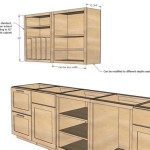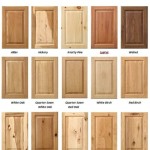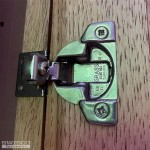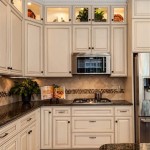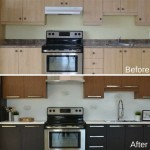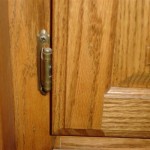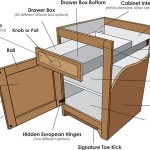Definition of Kitchen Cabinet
Kitchen cabinets are fundamental components of any modern kitchen, serving both functional and aesthetic roles. Defining them accurately requires considering their construction, purpose, and diverse styles. In essence, kitchen cabinets are enclosed storage units designed to hold food, cooking equipment, dishware, and various other kitchen necessities. These units are securely installed, typically against walls or beneath countertops, and are integral to optimizing space and maintaining organization within the kitchen environment.
The term "kitchen cabinet" encompasses a wide array of structures, each with specific design features and intended uses. These include base cabinets, wall cabinets, tall cabinets (also known as pantry cabinets), and specialty cabinets like corner cabinets or island cabinets. The primary function of kitchen cabinets is to provide organized storage, thereby reducing clutter and maximizing efficiency in food preparation and cleanup. Beyond functionality, cabinets significantly contribute to the overall style and ambiance of a kitchen, influencing its perceived value and aesthetic appeal.
Understanding the definition of kitchen cabinets also requires acknowledging the materials from which they are constructed. Common materials include wood (such as maple, oak, cherry, and birch), wood composites (like particleboard and medium-density fiberboard – MDF), and sometimes metal or plastic laminates. The choice of material influences the cabinet's durability, resistance to moisture and wear, and ultimately, its longevity. The finish applied to the cabinet, whether paint, stain, or laminate, also contributes to its appearance and protective qualities.
Furthermore, the definition extends to the internal components of a kitchen cabinet. Shelving, drawers, pull-out organizers, lazy Susans, and specialized storage solutions are all integral parts of the overall design. These internal features enhance the usability of the cabinet, allowing for more efficient storage and retrieval of items. The quality of these components, including the hardware used for hinges, drawer slides, and door handles, significantly impacts the cabinet’s performance and lifespan.
Key Point 1: Categorization Based on Placement and Function
A critical aspect of defining kitchen cabinets lies in understanding their categorization based on placement and function. The three primary categories are base cabinets, wall cabinets, and tall cabinets. Each type plays a distinct role in fulfilling the storage needs of a kitchen.
Base cabinets are the foundation of the kitchen's storage system. They are positioned on the floor and usually support the countertop. These cabinets are generally deeper and wider than wall cabinets, making them suitable for storing larger items like pots, pans, mixing bowls, and small appliances. Base cabinets often incorporate drawers for storing cutlery, utensils, and other frequently used items. The construction of base cabinets must be robust to withstand the weight of the countertop and its contents. Many base cabinets feature adjustable shelves, allowing for customization of storage space based on individual needs. The area beneath the sink is also typically housed within a base cabinet, often with specialized considerations for plumbing access and moisture resistance.
Wall cabinets are typically mounted on the wall, above the countertop. They are generally shallower than base cabinets and are designed to store dishes, glasses, spices, and other frequently used food items. The height and depth of wall cabinets can vary depending on the kitchen's design and the homeowner's preferences. Wall cabinets often feature glass doors to display decorative items or to easily identify the contents. The placement of wall cabinets is crucial for creating an efficient and ergonomic kitchen layout. The distance between the countertop and the bottom of the wall cabinet is carefully considered to provide ample workspace while ensuring easy access to stored items.
Tall cabinets, also known as pantry cabinets, extend from the floor to the ceiling, providing maximum storage capacity. These cabinets are ideal for storing dry goods, canned goods, and bulk food items. Tall cabinets can be customized with adjustable shelves, pull-out drawers, and door-mounted storage solutions to optimize organization. They are often used to house larger appliances, such as ovens or microwave ovens, creating a streamlined and integrated kitchen design. The strategic placement of tall cabinets can significantly enhance the functionality of a kitchen by consolidating storage and minimizing clutter.
Key Point 2: Material Composition and Durability
The material composition of kitchen cabinets is a defining factor that significantly impacts their durability, appearance, and overall lifespan. The most common materials used in the construction of kitchen cabinets include wood, wood composites, and metal, each offering distinct advantages and disadvantages.
Solid wood cabinets are prized for their natural beauty, strength, and durability. Hardwood species like maple, oak, cherry, and birch are commonly used for cabinet construction. These woods offer excellent resistance to wear and tear and can be stained or painted to achieve a variety of finishes. Solid wood cabinets are typically more expensive than cabinets made from wood composites, but their longevity and timeless appeal often justify the investment. The natural grain patterns and variations in color add character and warmth to the kitchen, making solid wood cabinets a popular choice for high-end kitchens.
Wood composites, such as particleboard and MDF, are engineered materials made from wood fibers bonded together with adhesives. Particleboard is less expensive than solid wood but is also less durable and more susceptible to moisture damage. MDF, on the other hand, is denser and more stable than particleboard, making it a suitable option for cabinet doors and drawer fronts. MDF provides a smooth surface for painting or laminating, allowing for a wide range of design options. Wood composite cabinets are a cost-effective alternative to solid wood, offering a balance of affordability and performance. However, it's imperative to ensure that the edges of wood composite cabinets are properly sealed to prevent moisture penetration.
Metal cabinets are less common in residential kitchens but are often used in commercial settings due to their durability and resistance to moisture and pests. Stainless steel cabinets are particularly popular in restaurants and food processing facilities. Metal cabinets are easy to clean and maintain and are resistant to rust and corrosion. While they may lack the warmth and aesthetic appeal of wood cabinets, metal cabinets offer a sleek and modern look. In recent years, metal accents and hardware have become increasingly popular in residential kitchens, adding a touch of industrial chic to the overall design.
Key Point 3: Style and Aesthetic Considerations
Beyond functionality and material composition, the style and aesthetic considerations are integral to defining kitchen cabinets. Cabinets play a significant role in shaping the overall look and feel of the kitchen, influencing its perceived value and aesthetic appeal. The style of kitchen cabinets is determined by factors such as door style, finish, hardware, and decorative elements.
Door styles are a defining characteristic of kitchen cabinets. Common door styles include Shaker, flat-panel, raised-panel, and glass-front cabinets. Shaker cabinets feature a simple, clean design with a recessed center panel, making them a versatile choice for both traditional and contemporary kitchens. Flat-panel cabinets have a minimalist look with a smooth, unadorned surface, ideal for modern and contemporary designs. Raised-panel cabinets have a more ornate design with a raised center panel, often featuring decorative details and moldings, suitable for traditional and transitional kitchens. Glass-front cabinets add visual interest and allow for the display of decorative items, creating a focal point in the kitchen.
The finish of kitchen cabinets significantly impacts their appearance and durability. Common finishes include paint, stain, and laminate. Painted cabinets offer a wide range of color options, allowing for customization to match any kitchen décor. Stained cabinets highlight the natural beauty of the wood grain, enhancing the warmth and character of the kitchen. Laminate cabinets are a cost-effective option that offers durability and easy maintenance, available in a variety of colors and patterns. The choice of finish should be carefully considered based on the desired aesthetic and the level of maintenance required.
Hardware, such as knobs, pulls, and hinges, adds the finishing touch to kitchen cabinets. Hardware can range from simple and functional to decorative and ornate, complementing the overall style of the kitchen. The choice of hardware should be aligned with the cabinet style and finish to create a cohesive and harmonious look. Decorative elements, such as crown molding, corbels, and decorative panels, can further enhance the aesthetic appeal of kitchen cabinets, adding architectural interest and character to the kitchen.

Common Kitchen Design Terminology Explained Bentons Kitchens

Kitchen Definitions

Kitchen Cabinet Political Dictionary

Kitchen Cabinet Wikipedia

What Is Base Cabinet Definition Of

Top 10 Characteristics Of High Quality Kitchen Cabinets Premier Kitchens And

8 Diffe Types Of Kitchen Cabinets You Ll Love

What Is Corner Cabinet Definition Of

Common Kitchen Design Terminology Explained Bentons Kitchens

What Is Drawer Base Cabinet Definition Of
Related Posts

